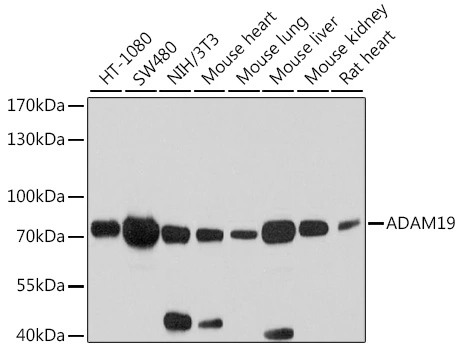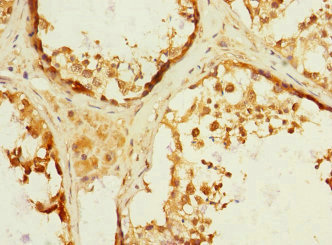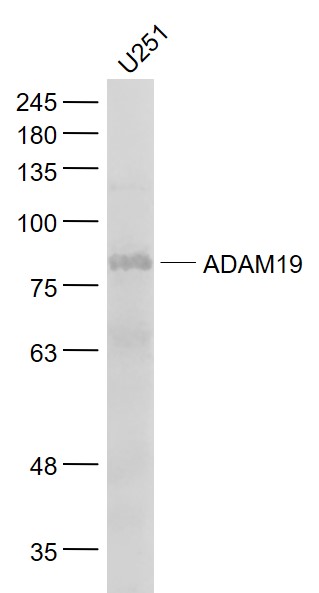
WB analysis of various sample lysates using GTX64665 ADAM19 antibody. Dilution : 1:2000 Loading : 25microg per lane
ADAM19 antibody
GTX64665
ApplicationsWestern Blot
Product group Antibodies
TargetADAM19
Overview
- SupplierGeneTex
- Product NameADAM19 antibody
- Delivery Days Customer9
- Application Supplier NoteWB: 1:1000 - 1:2000. *Optimal dilutions/concentrations should be determined by the researcher.Not tested in other applications.
- ApplicationsWestern Blot
- CertificationResearch Use Only
- ClonalityPolyclonal
- ConjugateUnconjugated
- Gene ID8728
- Target nameADAM19
- Target descriptionADAM metallopeptidase domain 19
- Target synonymsFKSG34, MADDAM, MLTNB, disintegrin and metalloproteinase domain-containing protein 19, a disintegrin and metalloproteinase domain 19 (meltrin beta), metalloprotease and disintegrin dendritic antigen marker, metalloprotease-disintegrin meltrin beta
- HostRabbit
- IsotypeIgG
- Protein IDQ9H013
- Protein NameDisintegrin and metalloproteinase domain-containing protein 19
- Scientific DescriptionThis gene encodes a member of the ADAM (a disintegrin and metalloprotease domain) family. Members of this family are membrane-anchored proteins structurally related to snake venom disintegrins and have been implicated in a variety of biological processes involving cell-cell and cell-matrix interactions, including fertilization, muscle development, and neurogenesis. This member is a type I transmembrane protein and serves as a marker for dendritic cell differentiation. It has been demonstrated to be an active metalloproteinase, which may be involved in normal physiological processes such as cell migration, cell adhesion, cell-cell and cell-matrix interactions, and signal transduction. It is proposed to play a role in pathological processes, such as cancer, inflammatory diseases, renal diseases, and Alzheimers disease. [provided by RefSeq, May 2013]
- Storage Instruction-20°C or -80°C,2°C to 8°C
- UNSPSC12352203







